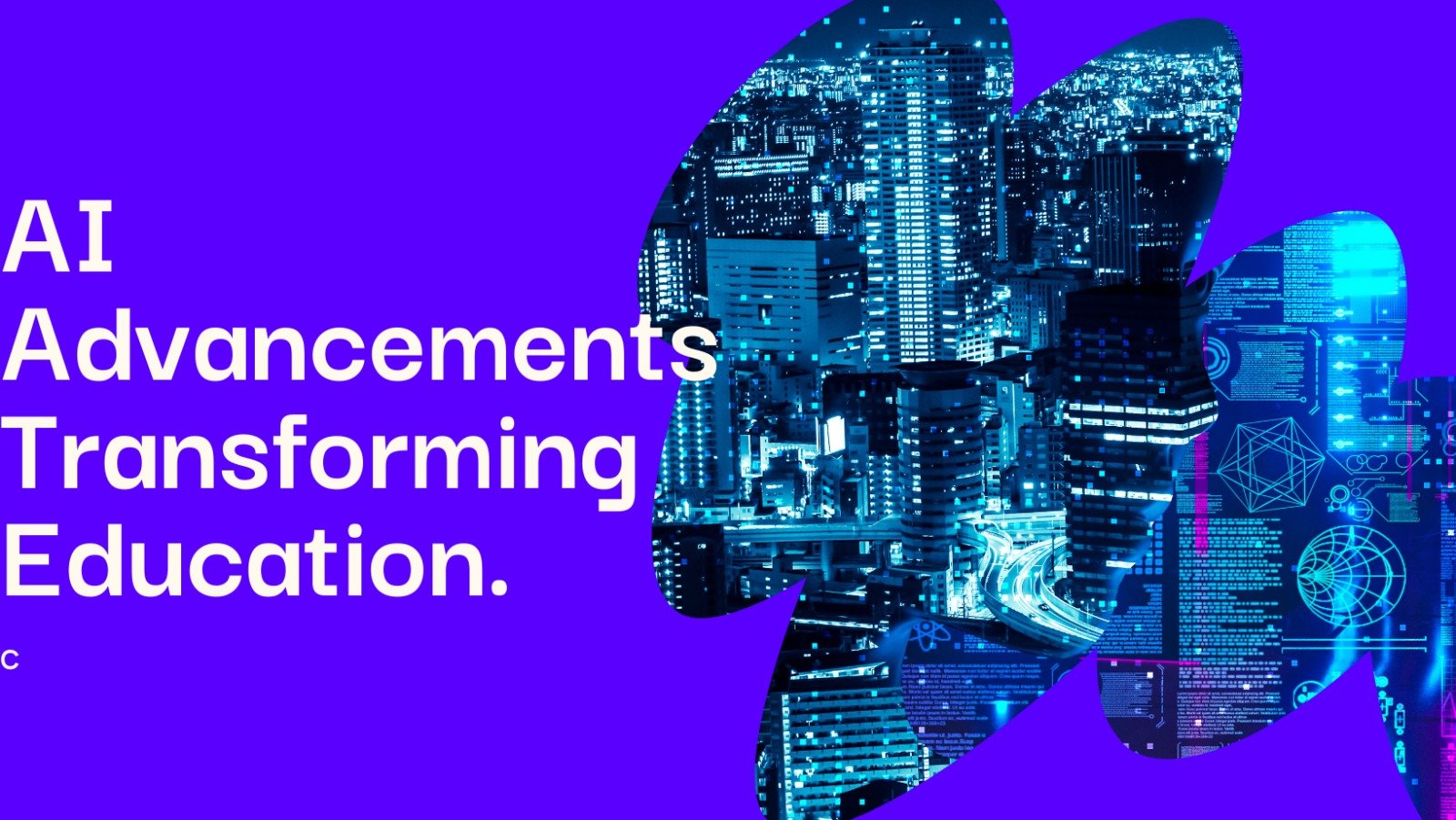Innovations in AI for Education
Artificial Intelligence (AI) is altering the instruction district, achieving fundamental advancements that upgrade education and learning encounters. From customized learning paths to intelligent tutoring systems and prescient investigation, simulated intelligence is reshaping the way that training is conveyed and gotten. This blog will examine the most recent advancements in simulated intelligence for schooling, zeroing in on customized learning, intelligent tutoring systems, prescient examination, and virtual homerooms. Articulations like simulated intelligence in schooling, customized learning, intelligent tutoring systems, prescient examination, and virtual survey anterooms will organize our conversation.
The Role of AI in Modern Education
The integration of AI in education can address different difficulties, including personalized learning, educator responsibility, and understudy commitment. By leveraging AI advancements, teachers can establish more powerful and responsive learning environments that take care of individual understudy needs, advance further understanding, and work on by and large educational results.
Personalized Learning
1. Adaptive Learning Platforms
One of the primary advancements in artificial intelligence for training is the improvement of versatile learning stages. These platforms use AI calculations to investigate understudy performance and tailor educational content to their particular necessities. For instance, systems like DreamBox and Knewton change the trouble of lessons in real-time in light of an understudy’s advancement, ensuring that students are neither exhausted with simple material nor overpowered by challenging content. This personalized methodology keeps up with understudy commitment and advances a more viable learning experience.
2. Customized Learning Paths
Computer-based intelligence in like manner enables the making of customized learning paths for each student. By examining information on a student’s resources, deficiencies, learning styles, and tendencies, computer-based intelligence can recommend unequivocal resources and activities that line up with their clever necessities. This approach further develops learning results as well as connects with students to expect command over their instructive journey, cultivating more noticeable freedom and inspiration.
Intelligent Tutoring Systems
1. Real-Time Feedback and Support
Intelligent Tutoring Systems (ITS) are one more earth-shattering development in man-made intelligence for training. These systems furnish understudies with real-time feedback and support, similar to a human coach. For instance, Carnegie Learning’s MATHia uses AI to convey personalized numerical instruction, offering hints and explanations as understudies deal with issues. This prompt feedback assists understudies with understanding concepts all the more profoundly and the right errors as they happen, promoting a more compelling learning process.
2. Scalable One-on-One Tutoring
AI-controlled tutoring systems can likewise scale one-on-one tutoring to a lot bigger crowd. Traditional tutoring is often restricted by the availability of human guides, yet AI can offer individualized help to endless understudies all the while. This versatility is especially valuable in enormous homerooms or online learning environments where personalized attention is challenging to accomplish.
Predictive Analytics
1. Early Intervention and Support
Predictive analytics is another strong application of AI in education. Overwhelmingly of data, AI can recognize designs and foresee understudy results. For instance, platforms like BrightBytes and Civitas Learning utilize predictive analytics to hail understudies who might be in danger of falling behind or dropping out. This early ID permits educators to intercede proactively, offering assigned help and resources for helping students remain on track.
Also Read Top 5 Machine Learning Tools
2. Data-Driven Decision Making
Computer-based intelligence-driven prescient investigation in like manner enables educators to make more educated, data-driven decisions. By understanding patterns and examples in understudy performance, schools can dispense assets all the more, tailor instructional techniques, and continuously further develop the learning environment. This data-driven approach guarantees that educational institutions can respond all the more progressively to the necessities of their understudies and staff.
Virtual Homerooms and AI-Fueled Learning Environments
1. Enhanced Online Learning Experiences
The ascent of virtual homerooms has been advanced quickly by the requirement for remote learning solutions. AI is playing a critical role in enhancing these online learning experiences. For instance, AI can mechanize administrative undertakings, for example, participation tracking and grading, allowing instructors to zero in on additional instruction and understudy interaction. In addition, AI-fueled chatbots can give understudies instant solutions to their questions, facilitating continuous learning outside normal class hours.
2. Interactive and Engaging Content
AI is likewise transforming the content conveyance in virtual study halls. Devices like Nearpod and Pear Deck use AI to make interactive and engaging lessons that incorporate multimedia components, tests, and cooperative exercises. These platforms make learning more pleasant as well as assist understudies with retaining information better through dynamic participation.
Conclusion
The innovations in AI for education are transforming traditional learning models, making education more personalized, proficient, and available. Personalized learning, intelligent tutoring systems, predictive analytics, and AI-controlled virtual homerooms are only a couple of instances of how AI is reshaping the educational landscape. As these innovations continue to advance, they hold the commitment to creating more inclusive and viable learning environments that take special care of the different necessities of understudies around the world.
Embracing AI in education requires a smart methodology, ensuring that these innovations are utilized morally and responsibly. By focusing on understudy-focused solutions and continuously refining AI applications, we can open the maximum capacity of AI to revolutionize education, making it more adaptive, engaging, and significant for people in the future.

